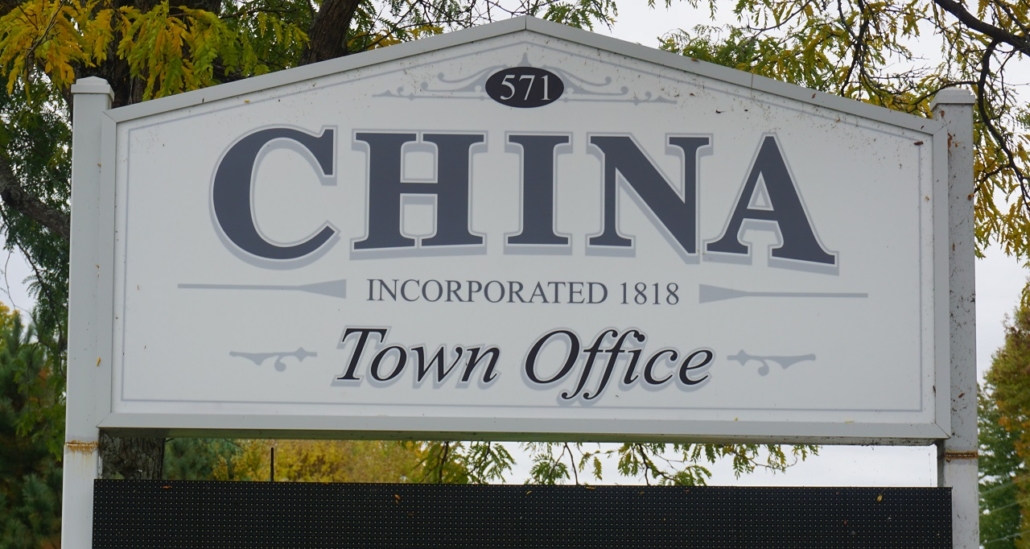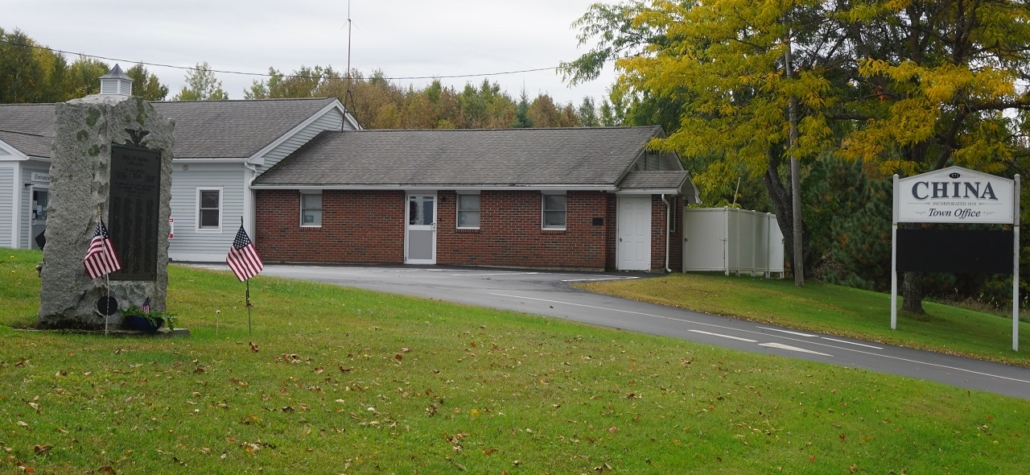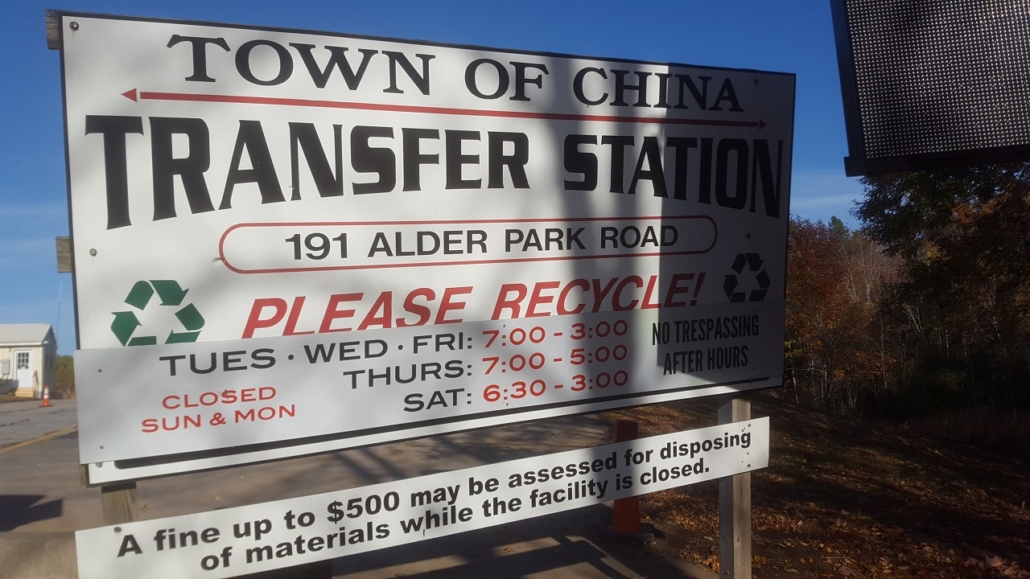China select board discusses process for dealing with land use violations
 by Mary Grow
by Mary Grow
China select board members spent three-quarters of an hour of their Dec. 19 meeting talking about their process for dealing with accumulated land use violations.
They made two decisions, by unanimous votes.
They extended the amnesty program during which people who failed to get required permits can get them without paying any extra fee. The new deadline is Feb. 28, 2023. The program was established in September to encourage property-owners who did work without permits to apply for them (see the Sept. 29 issue of The Town Line, p. 3).
And they approved Town Manager Rebecca Hapgood’s suggestion to continue employing resident Dwaine Drummond to deal with the backlog, using funds from the codes enforcement budget.
Drummond has a list of more than 300 cases to examine, some merely lacking proof in the files that everything was done right, some needing remedial work. The main reason for the build-up, he and select board members said, was the number of codes officers China has had over the last eight or so years.
Drummond emphasized that none did a poor job. But some were less conscientious than others about record-keeping; each had his own filing system; and follow-through was not always consistent.
In addition, the State of Maine expanded MUBEC (the Maine Uniform Building and Energy Code); meeting those regulations now requires more inspections and more paperwork.
As a result, Drummond said, codes enforcement has not been consistent. It should be, he and current assistant codes officer Nicholas French agree.
Drummond has found many of the residents he tries to reach about possible violations uncooperative. Whenever he calls someone who agrees to come and talk with him immediately, “We do the happy dance,” he said. Often, he said, the time expended trying to connect with a property-owner is worth more than the permit fee town officials hope to collect.
Select board members supported continuing Drummond’s work to benefit residents who are upset by unsafe buildings, unlicensed junkyards and similar neighborhood problems; to allow French to continue to deal with current issues and not contribute to the backlog; and to establish a more consistent pattern that will treat everyone fairly.
Another topic discussed Dec. 19, for the second time (see The Town Line, Dec. 1, p. 2), was whether select board members should also be members of other town boards and committees that report to the select board.
Board members did not want to forbid the practice. Having the same person on the select board and on another board makes communication easier; and there are too few volunteers to fill all committee slots.
They voted to adopt a policy that no subsidiary committee can have more than one select board member serving simultaneously.
In other business, Kennebec County Sheriff’s Deputy Ivano Stefanizzi again reported too many drivers are speeding in the school zone on Lakeview Drive. Flashing signs limit speed to 15 miles an hour when buses are loading and unloading.
Select board member Brent Chesley said after noticing mailboxes knocked askew on Lakeview Drive and observing a plow truck – described in the conversation as under contract with the State Department of Transportation – driving faster than he thought right, he had informed state highway personnel. He was told state plows are not supposed to drive faster than 25 miles an hour.
Select board members reviewed bids for a utility trailer and sold it to the higher bidder for $585. They reviewed bids for installing a heating unit in the community forest building and accepted the lower bid, $2,288 from M. A. Haskell Fuel Company, in South China.
Hapgood said the town office is accepting nominations for Spirit of America awards for 2023, to honor people who have volunteered in the town.
For Christmas weekend, the China transfer station will close at noon Saturday, Dec. 24; the town office is not open Dec. 24. All town departments will be closed Monday, Dec. 26.
The next regular China select board meeting will be Tuesday, Jan. 3, instead of the usual Monday evening. On Monday, Jan. 2, all town departments will be closed for the New Year’s Day holiday.








